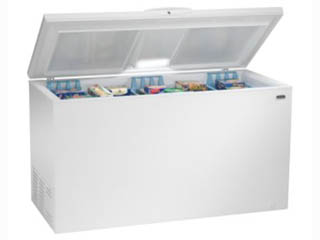Storing Food II: Refrigerators & Freezers
 Corporations are downsizing their inventory, trucking rates are up, and the temperature increases. Further doom and gloom is that the USA has sold off its grain reserves-fresh milk, meat and eggs are skyrocketing, and will certainly get worse –very worse- if the USA attacks Iran causing a global inflationary spiral.
Corporations are downsizing their inventory, trucking rates are up, and the temperature increases. Further doom and gloom is that the USA has sold off its grain reserves-fresh milk, meat and eggs are skyrocketing, and will certainly get worse –very worse- if the USA attacks Iran causing a global inflationary spiral.
So people are stockpiling food up as best they can, prompted by overseas media news, and political leaders saying: “Stock Up”. This leads us into the second article on this series employing the easiest means of protecting perishables. We will be discussing electrical and propane means. Root Cellars will be addressed later.
There are certain considerations to buying a new refrigerator-freezer. For the man in the house-ignore him, as he, probably like me, was remembering his mother’s early 60’s technology of NON-FROST FREE, which means you accumulate ice in thick sheets that diminish the cooling effect, forcing the compressor to run longer, harder, and consume more electricity. Also from my experience of having to remove all the food to defrost, and run water all over the floor, you might damage the tubing, by chipping ice, inside the refrigerator-freezer and that means a no fix situation. Other joys of NON-FROST FREE systems are that the ice builds up under the gasket around the door and makes the seal loose.
When you buy a new refrigerator-freezer buy ENERGY STAR as your first consideration and FROST FREE as your second consideration.
Vertical refrigerators with a “French Door” and freezer on the bottom, albeit more initially costly, are of the latest efficient design and an “Energy Star” recommendation. Two years ago I bought Diane one of these on a 12 months no down and interest-free delivery-Veterans Discount Day and everything else I could tack on. Diane wanted a door icemaker and cold water- “Nah!” I said. “Ice makers go bad-remember when….yada yada So we included the water and icemaker and I really enjoy it.
Within a year the Maytag was paid off. We chose the Maytag model as it had the best parts-repair warranty. As would be expected the icemaker quit almost at the time of the warranty expiration-but Diane being insurance minded and disregarding my anti-insurance views had a 12-month extension. They sent us the replacement digital-analog module, and the name of the repairman in the area. The module was a simple plug in affair in the back of the unit. I was going to do it when Diane called the repairman.
Tim’s Maintenance & Repair Service, 540-382-2600 came right out. As would be expected he had the secret telephone numbers to get more data to program the machine to work. I went back outside to shovel compost.
The new refrigerators are mostly digital, and in modern house wring and electrical renovations the refrigerator is on a separate circuit. However it is imperative to place a SURGE PROTECTOR in the wall plug, or sooner or later, the digital sensitive circuits will be fried when there is an electric storm miles away and you get a voltage spike. In our case it was not a surge, (I already had a protector on the circuit) but an actual mechanical relay that failed. We bought an extra circuit board for me to replace if this happens again. Husbands do have their use.
The large commercial stainless steel refrigerators and freezers you see in the movies and yuppie homes suck electricity and according to my sources are impressive but not as efficient as a home model. Other thoughts are to buy home type large freezers to stock up the deer meat. Upright ENERGY STAR-FROST FREE is the only way to go.
You may still have Mom’s old non frost-free model horizontal in the 22 Cu. Ft. sizes, which eats up space. This is a garage, basement or milk house collector’s item. They usually run for 30 years. Once you move it, repair the gasket seal and let it set for a few days, or longer, to let the gas inside settle before energizing. I use mine for storing cat-dog-rabbit kibble to keep the mice out. Many of these fine old storage chests are available for hauling. If not working, they are often used as potato and root storage by burying them near the garden and just piling hay or leaves on in the winter months for increased freeze protection.
To fix the gasket, remove the door, gently undercut the gasket and scrape the door edge clean. Buy a large tube of automotive “GOOP ™” sealer product from Advancer Auto, lay down a bead and press the gasket back into place using the clips. It is not a big deal. Although this is not a digital unit-put a surge protector on it anyway as it helps it live longer by protecting the insulated wiring.
Some hardy souls in real Back2theLand living-OFF GRID- use a propane refrigerator and sometimes-small freezers. Having had their use I would not recommend them, as they are very costly, inefficient, ice clog prone, and unstable in temperature variances. RV’s also use these LP refrigerators and if you are looking for a LP unit you might locate a RV unhappy person and buy the whole RV for the price of the refrigerator.
Most units are 2-way. That implies 120VAC and LP gas. . These are still NON-FROST FREE so be prepared for defrosting. The other units are 3-way. 120VAC-LP and 12VDC.
Assuming you have one of these models the back of the unit will have a mesh heat dispensing grid and a top vent. You can as I did place a 115VAC or 12VDC squirrel cage computer fan in the back to blow the heat up and out of the unit and this stabilizes the cooling on hot miserable humid days. www.NorthernTool.com, items: Mini-Box Fans: 0780-2801 and 07801-2801. We will be using these in our root cellar also. They run about $8.00 each.
For the thrifty pocket there exists small camper portable picnic model refrigerators that hold a case of cans. These are great for short trips but their danger lies in some models that use “Iodine absorption” for cooling. If you keep one of these inside your house, or camper, and the tube ruptures you are dead. Keep them outside in the fresh air. The standard safer gas inside the refrigerators and freezers is R134-A, just like in your car.
Lastly, hang a refrigerator thermometer inside the unit to keep tabs on hot days. The new digital ones have a visual thermometer on the front panel.
SPECIAL NOTE: For those who wish to contact me you can use my e-mail: back2theland@swva.net. This will ensure you get a reply as we have three, or more, satellites broadcasting this column. Not all sites have reader-author communication yet. Your personal privacy is assured.
COPYRIGHT: 2008, Back2theLand, Mark Steel



